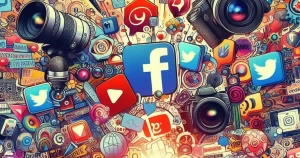How ISO 13485 Cables Impact Medical Devices

Medical devices have revolutionized healthcare by providing accurate diagnoses, efficient treatment, and improved patient care. These devices rely on a complex network of components to function effectively. Among these components, iso 13485 cable plays a pivotal role, often as the unsung heroes that ensure seamless communication and power distribution within the device.
ISO 13485 is an internationally recognized quality management standard designed for medical devices. It sets stringent design, manufacturing, and distribution requirements for these devices. This iso 13485 cable standard ensures that medical devices are safe, reliable, and effective, safeguarding patients’ well-being.

The Crucial Role of Cables in Medical Devices
Cables are the lifelines of medical devices. They transmit data, deliver power, and enable communication between various components within a device. For a medical device to perform optimally, its cables must be of the highest quality and meet ISO 13485 standards.
ISO 13485 Cable Requirements
Biocompatibility: Cables must not introduce harmful substances into the patient’s body.
Sterilization Compatibility: Cables should withstand sterilization processes without compromising performance.
Traceability: Manufacturers must be able to trace the cables’ origins and materials used.
Risk Management: A comprehensive risk management process must identify and mitigate cable-related risks.
Ensuring Patient Safety
Patient safety is paramount in the medical field. ISO 13485-compliant cables ensure that medical devices do not harm patients. They are designed to minimize the risk of infections, allergic reactions, or any adverse effects from cable use.
Enhancing Reliability
Medical devices need to perform consistently and reliably. ISO 13485 cables are built to withstand the rigorous demands of healthcare settings. They are durable, resistant to wear and tear, and engineered to provide uninterrupted connectivity.
Meeting Regulatory Standards
Compliance with ISO 13485 is often a prerequisite for entering global markets. Medical device manufacturers must adhere to these standards to obtain regulatory approvals. ISO 13485 cables, an integral part of the devices, contribute significantly to achieving compliance.
Minimizing Interference
Medical devices often operate in environments with a multitude of electronic devices. ISO 13485 cables are designed to minimize electromagnetic interference (EMI) and ensure that the device functions correctly without any disruptions.
Challenges and Solutions
Manufacturers face challenges in producing ISO 13485-compliant cables, including cost constraints and complex regulatory requirements. However, advancements in cable technology and increased industry awareness are driving solutions to overcome these challenges.
Future Trends in Medical Device Connectivity
The field of medical device connectivity is continuously evolving. As the healthcare industry embraces digital transformation, we expect to see innovations in ISO 13485 cables, such as wireless connectivity and smart cables that monitor device performance in real time.
Case Studies
Examining real-world examples of how ISO 13485 cables have positively impacted medical devices can provide valuable insights into their significance and practical applications.
Cost Considerations
While the importance of quality in medical device cables cannot be overstated, cost considerations also play a significant role in the decision-making process for manufacturers. Balancing quality and cost-effectiveness is a constant challenge.
Conclusion
ISO 13485 cables are the unsung heroes of the medical device industry, playing a pivotal role in ensuring these devices’ safety, reliability, and effectiveness. As technology advances, the importance of high-quality cables that meet ISO 13485 standards will only grow.





